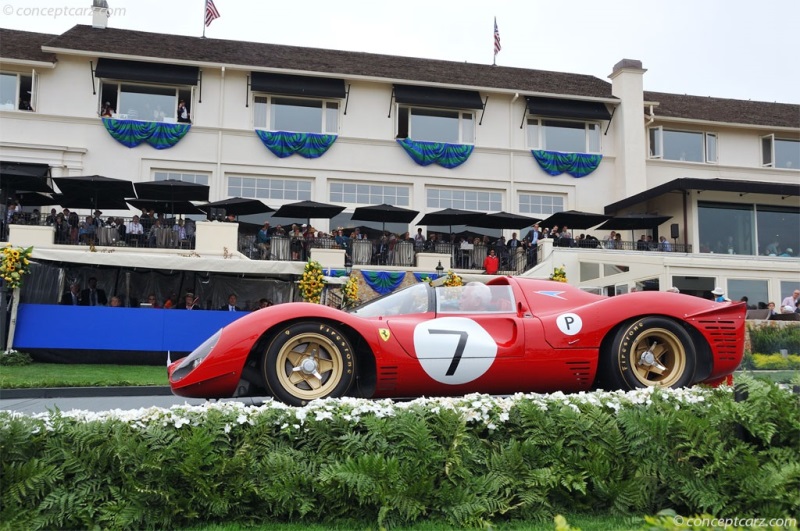When the FIA introduced a prototype class for the 1963 World Sportscar Championship, Ferrari tasked its engineers and designer Mauro Forghieri with creating a new chassis unrelated to the existing 250-series Grand Touring cars. Beginning with a tubular space-frame chassis, double wishbone suspension, disc brakes, and rack-and-pinion steering, it was given open cockpit bodywork with a mid-engine setup. This was not the first Ferrari with the mid-engine layout, but it was still a relatively new configuration. John Cooper had caught the world off-guard, especially Ferrari, with its mid-engine Formula 1 car during the late 1950s. Witnessing the revolutionary performance of placing the 'cart before the horse,' Ferrari applied this setup to its sportscar racing program with several mid-engined V6 and V12 prototypes. The first was the smaller-engined Dino 246 SP prototype of 1961, followed two years later by the V12-powered 250 P.
Spyder by Drogo
Chassis #: 0856
View info and historyPower was from the 250 Testa Rossa-type single-cam 3.0-liter engine, mounted longitudinally with a five-speed gearbox and transaxle, and equipped with six Weber 38 DCN carburetors and delivering 310 horsepower at 7,500 RPM. The 250 P was the first Ferrari sports racing car with a V12 engine mounted in the rear, powerful enough to contend for outright victories rather than just class success. It won the 24 Hours of LeMans in 1963, the 12 Hours of Sebring, the Canadian Grand Prix, and the 1000 km Nürburgring. Scuderia Ferrari led the assault in Europe while NART raced them in the Americas. Among the list of drivers included Pedro Rodriguez, Lorenzo Bandini, John Surtees, Willy Mairesse, and Ludovico Scarfioitti. Ferrari built four examples of the 250 P (chassis numbers 0810, 0812, 0814, and 0816) and one development mule based on a Ferrari 246 SP chassis (number 0796). After the 1963 racing season concluded, all of the 250 P chassis were late converted to 275 P or 33 P specification in preparation for the 1964 season.
Although the chassis and many other mechanical components remained unchanged, the engines in the 275 P and 330 P were enlarged with the 275 P having a bored-out 3.3-liter version of the 250 Testa Rossa-type engine originally powering the 250 P. The 330 P, however, received a 4.0-liter Colombo-designed V12 based on engines powering the 400 Superamerica road cars. While the 330 P was more powerful, many drivers found the 275 P to be more nimble and better suited to shorter and more technical circuits.
Spyder by Drogo
Chassis #: 0856
View info and historyAlong with the four converted 250 P chassis, an additional three new chassis were built. Engines were often swapped between chassis so determining the number of chassis produced with each engine is not possible. Scuderia Ferrari, NART, and Maranello Concessionaires campaigned the 275 P and 330 P cars during the 1964 and 1965 season with several notable finishes included a 1st, 2nd, and 3rd place sweep of the 1964 24 Hours of Le Mans to much chagrin to Henry Ford and his Ford GT40 program. Guichet and Vaccarella driving a 275 P for Scuderia Ferrari took the overall position, followed by a 330 P driven by Hill and Bonnier for Maranello Concessionaires, with third going to a 330 P Scuderia Ferrari team car driven by Bandini and Surtees. Ford scored first in the GT class, beating the Ferrari GTOs with the AC Cobra Daytona Coupe. Ferrari had hoped to homologate its new 250 LM (Le Mans) for Group 3 GT competition, but in April of 1964, the FIA refused to homologate the model. Ferrari had introduced the 250 LM at the Paris Auto Show in November of 1963 and it wore similar bodywork to the 250 P but in a closed configuration. A minimum of 100 examples was required in order to compete in Group 3, and by April, Ferrari had not come close to that figure. Thus, the 250 LM was forced to run in the prototype class against much faster competition until it was homologated as a Group 4 Sports Car for the 1966 season. Between 1963 and 1965, Ferrari built 32 examples of the 250 LM, and all but the first example (the Paris Auto Show Car - chassis 5149 with a 250 P engine) were equipped with a 3.3-liter engine as used in the 275 P. Under the traditional Ferrari naming convention, the 250 LM with its 3.3-liter engine should be been called the '275 LM.' Since Enzo knew he was unable to satisfy homologation requirements he hoped that using the '250' name - a name associated with his plethora of road-going cars - would facilitate the homologation process. FIA officials saw past the ruse and declined Enzo his homologation. The 250 LM used heavier gauge tubing for its space frame chassis and additional cross-bracing but retained the fully independent double wishbones suspension, disc brakes, five-speed transaxle, and rack-and-pinion steering of the 250 P. 
Spyder by Drogo
Chassis #: 0856
View info and historyGoing into the 1965 season, Ford had something to prove and Ferrari had something to defend, and to that end, no expense was spared. Ferrari's contenders were the 275 P2 and 330 P2, and the 250 LM. The 'P2' were factory-supported teams' cars, while the 250 LM was raced by privateers and factory teams. The P2 cars had more aerodynamic bodywork, a lower and lighter chassis, and modified engines equipped with four camshafts. The engine in the 275 P2 produced 350 horsepower and the 330 P2 had 410 horsepower. During the 1965 season, the 275 P2 (chassis 0836) won the 1000 km of Monza, and the Targa Florio (0828), the 330 P2 (0828) won the Nurburgring 1000 km, and a 365 P2 won the 12 Hour Reims. At Le Mans, the Fords were once again plagued by reliability issues, with the P2 cars suffering a similar fate. The best the P2 could achieve was a 7th place finish. With both the top contenders for Ferrari and Ford out of commission, it paved the way for the 250 LM to fill the void. Jochen Rindt and Masten Gregory crossed the finish line first in a 250 LM, the last time Ferrari won an overall victory in the endurance classic.Customer versions of the P2 cars were powered by a single overhead camshaft 4.4-liter engine and thus were named the 365 P2. For the 1966 season, Ferrari upgraded its 365 P2 cars with new Piero Drogo bodywork. The P3 version of the Ferrari 330 incorporated a Lucas fuel injection system and a Type 593 transmission. The Ferrari P3 models no longer remain. The original P3 (chassis 0846) was converted to P3/P4 specification and was involved in an accident at Le Mans in 1967. Privateer versions of the P3 were known as the 412 P and had carbureted versions of the engine. NART used chassis number 0844, Scuderia Filipinetti (0848), Francorchamps (0850), and Maranello Concessionaires (0854). Only 0850 and 0854 were built to the original 412 P specification while 0844 and 0848 were conversions. 
Spyder by Drogo
Chassis #: 0856
View info and historyFerrari's entry for the 1967 season was the 330 P4 and four examples were built, including chassis 0846 upgraded from P3 to P4 specification. Ford had won at the 1966 Le Mans 24 Hour Race, with three cars crossing the line side-by-side in an epic photo finish. Ford had conquered one of Europe's most grueling and prestigious proving grounds. Ferrari, in turn, swept the 1967 24 Hours of Daytona, with two P4s and one 412 P crossing the finish line together (in first 0846, second 0856, and third place 0844). Enzo had conquered one of America's most grueling and prestigious endurance races and on Ford's home soil. Ford brought a new MK IV to Le Mans, and despite its horsepower advantage, its reliability nearly cost them another victory. One of the two surviving MK IV cars was able to finish first overall, followed by two 330 P4s. Ford had won another victory at LeMans, but at the close of the season, Ferrari had won the World Championship, its 12th victory in 14 years. The end of the season also brought rule changes, making the 330 P3, 330 P4, and 412 P obsolete. In protest, Ferrari boycotted sports car racing in 1968.One of the 330 P4s did not race again, while two were converted to '350 Can-Am' specification and received a larger version of the twin-cam V12 engine. They competed in the very competitive Can-Am Challenge with its best result being a fifth-place finish by Chris Amon at the Monterey Grand Prix at Laguna Seca. After the season, they were sold to privateers and continued to race.
by Daniel Vaughan | Dec 2020
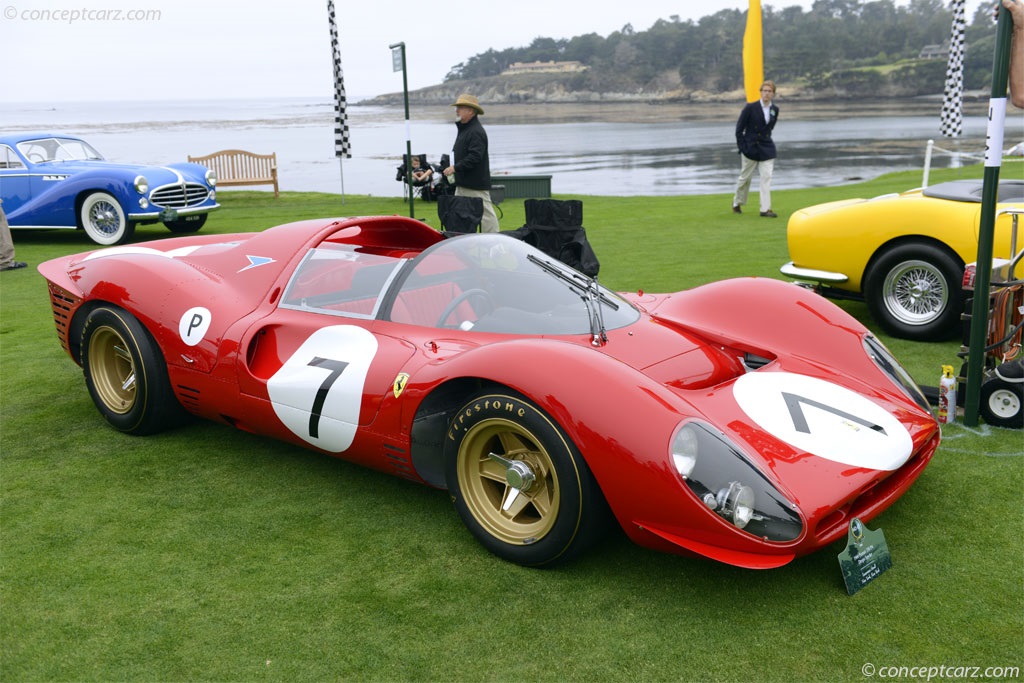
Spyder by Drogo
Chassis #: 0856
View info and history
Although the chassis and many other mechanical components remained unchanged, the engines in the 275 P and 330 P were enlarged with the 275 P having a bored-out 3.3-liter version of the 250 Testa Rossa-type engine originally powering the 250 P. The 330 P, however, received a 4.0-liter Colombo-designed V12 based on engines powering the 400 Superamerica road cars. While the 330 P was more powerful, many drivers found the 275 P to be more nimble and better suited to shorter and more technical circuits.
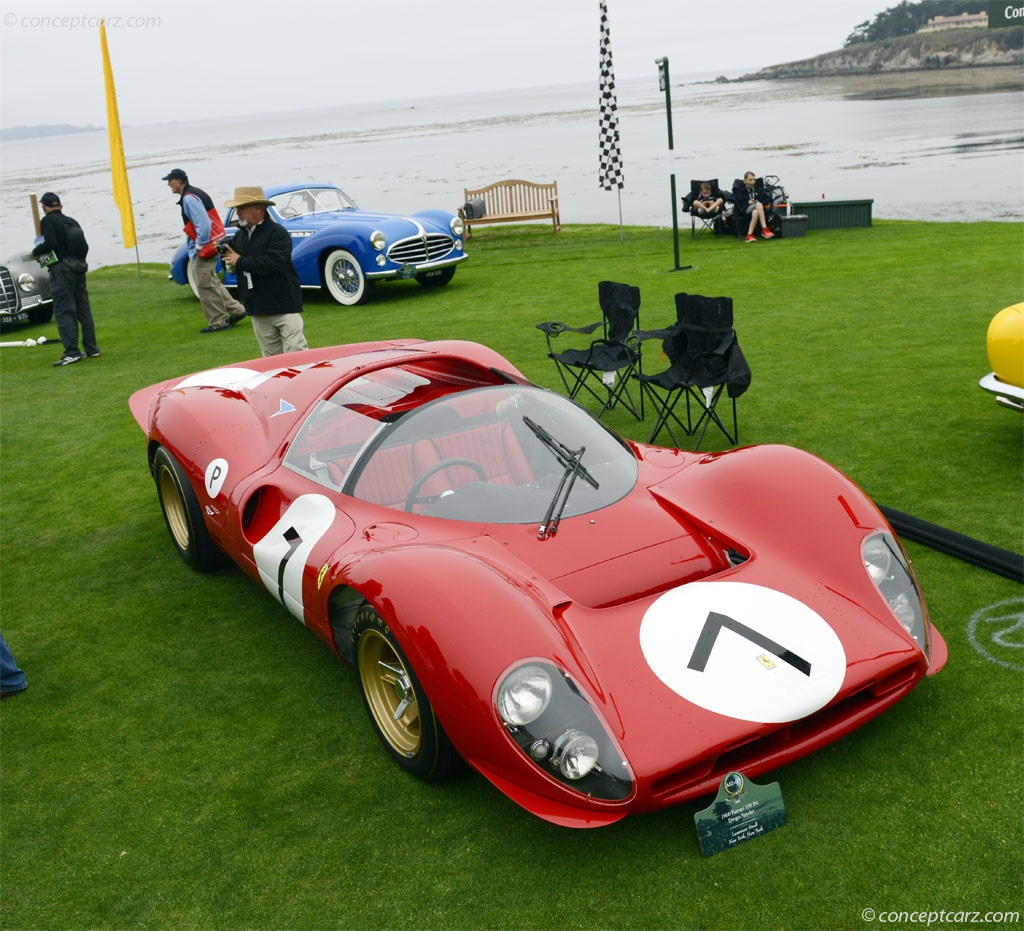
Spyder by Drogo
Chassis #: 0856
View info and history
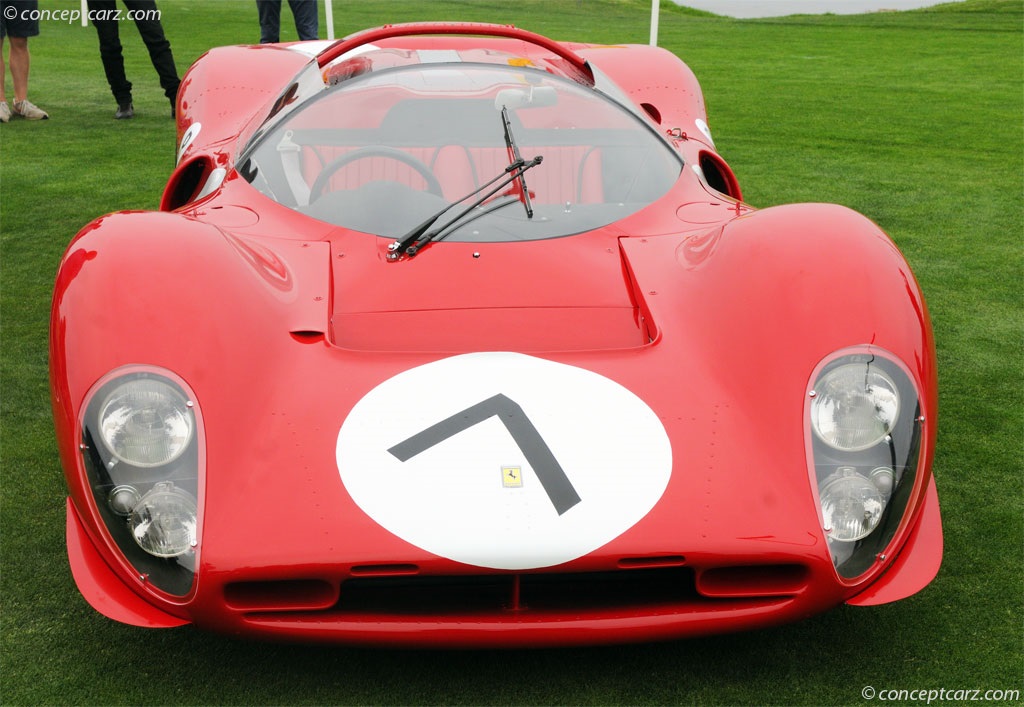
Spyder by Drogo
Chassis #: 0856
View info and history
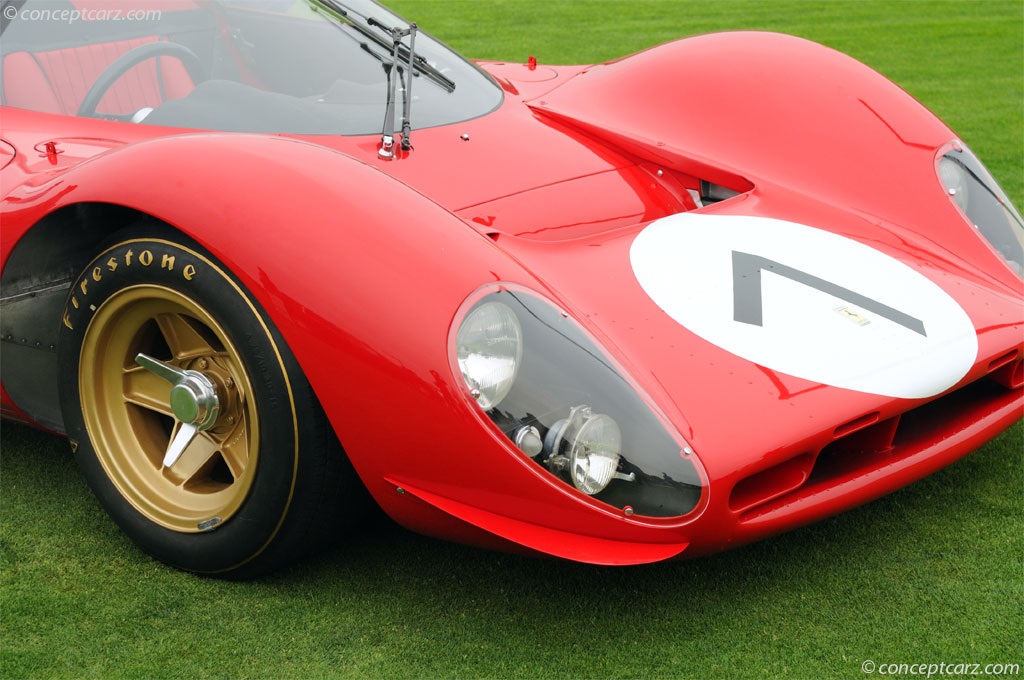
Spyder by Drogo
Chassis #: 0856
View info and history
by Daniel Vaughan | Dec 2020
Related Reading : Ferrari 330 History
The Ferrari 330 series was produced from 1963 through 1968. They were replacements for the Ferrari 250 GT 22 with many of the series retaining the style and mechanical components of their predecessors. The front-engined, rear-wheel drive vehicle were powered by a derivative of the 400 Superamericas four-liter Colombo 12-cylinder engine. The first in the series was the 330 America, which....
Continue Reading >>
Continue Reading >>
Related Reading : Ferrari 330 History
The Ferrari 330 series belonged to a long line of Ferrari road cars with front-mounted V12 engines, cars that were members of a bloodline whose history is still being written by the 612 Scaglietti and 599 GTB Fiorano. The 330s name derived from the then-familiar Ferrari practice of naming cars for their per-cylinder displacement in cubic centimeters, indicating that the engines used to power this....
Continue Reading >>
Continue Reading >>
Similar Vehicles
Similar Automakers
Similarly Sized Vehicles
from 1966
1966 Ferrari 330 P4 Vehicle Profiles
Recent Vehicle Additions
Related Automotive News

Ex-Surtees race-winner and rare Chinetti-commissioned Spider join Salon Privé's Ferrari 75th Anniversary class
Salon Privé Concours dElégance presented by Aviva introduces pair of important Maranello models - from road and track - in its Ferrari 75th Anniversary class
#1 - One of only two Ferrari 275 GTB4 S NART Spiders built with an aluminium body, and...

From Lucybelle to DHL: Historic Porsche Competition Cars Race to Gooding & Company's Pebble Beach Auctions
The very best of Porsche excellence will come to Pebble Beach with a 1959 Porsche 718 RSK, a 1969 Porsche 90802, a 2007 Porsche RS Spyder Evo, and more.
Gooding %26 Company, the official auction house of the Pebble Beach Concours dElegance®,...

1929 Duesenberg J/SJ Convertible And 1963 Ferrari 250/275P Win Best Of Show At The 23rd Annual Amelia Island Concours D'Elegance
JACKSONVILLE, FL (March 10, 2018) – The 1929 Duesenberg JSJ Convertible and 1963 Ferrari 250275P won the Best In Show honors on Saturday, March 10, at the 23rd annual Amelia Island Concours dElegance. The news comes following another crowd...

JOHN SURTEES CBE ANNOUNCES AUCTION LOTS FOR THE 2016 HENRY SURTEES FOUNDATION TEAM KARTING CHALLENGE
Tuesday 5 July 2016 – Mercedes-Benz World Circuit, Brooklands
Team entries are shaping up well for the hotly contested Henry Surtees Foundation Team Karting Challenge, which will take place on Tuesday 5 July 2016. The event organised by John S...

1965 24 Hours of Le Mans: A Cool Head in the Face of a New Threat
Heading into the 1965 24 Hours of Le Mans it had become clear Ford was intent on taking the fight to Ferrari. Ford would spare no expense to take the fight to the company it had intended to buy. Ironically, the North American Racing Team would enter...
















